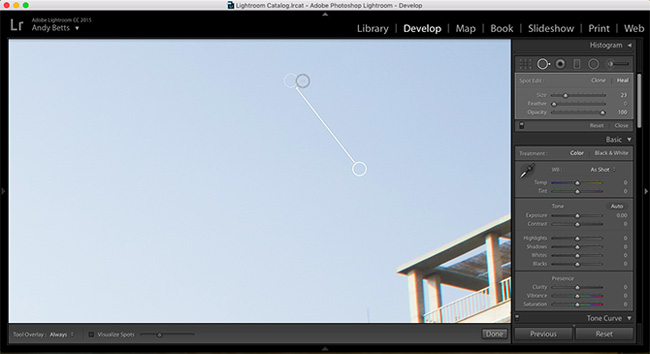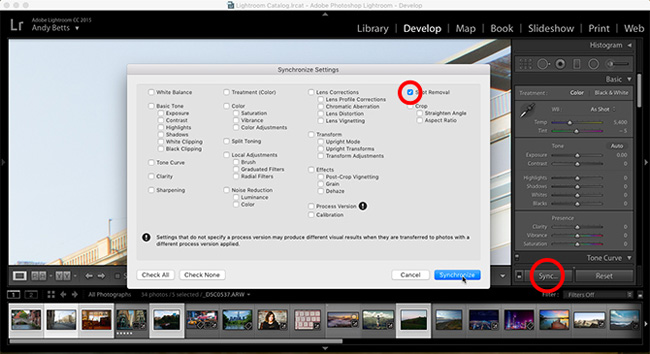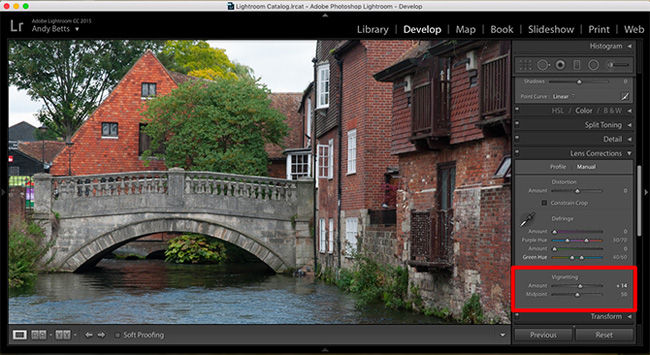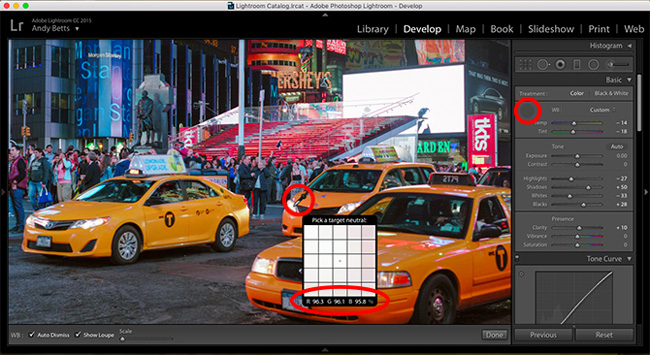4 common errors on camera can be fixed in Lightroom
There are no perfect cameras or lenses. Whether you are using a smartphone or a high-end DSLR camera, they all have their own drawbacks and limitations. But it's okay, there will be a way to fix those disadvantages.
In this article, we will show you the most common camera errors, including:
- Dust on the sensor.
- Dead pixel (dead pixel).
- Blurred background.
- The problem of white balance.
You can solve all these problems in Lightroom. This photo editor will help you improve the image quality and you don't need to spend money to upgrade the camera life anymore.
- A set of video tutorials on how to edit photos with Lightroom
- Instructions on how to pair HDR photos on Lightroom
- Make photos as beautiful as hotgirl with Lightroom
1. Dust on the sensor
Dust spots on bad sensors and pixels are two different problems when using the camera but have the same solution.
Dust is a problem on most removable camera lenses, in which the sensor is exposed to the elements when you replace the lens. Some cameras have a built-in sensor cleaning function, otherwise you can clean the dust with a blown bulb (do not blow dust on the sensor by mouth because it will cause worse problems. ).

However, there are some very stubborn stains. If you do not want to manually clean or use other cleaning devices, you can use Lightroom to solve this problem.
- Open the Develop module and click the Spot Removal Tool (or press Q on the keyboard).
- Choose Heal.
- Check the box next to Visualize Spots under the image. Drag the slider to adjust the threshold level.
- Zoom in and move around the image. Dust spots are easily visible in white.
- Adjust the size of the eraser to suit the dust size.
- Click on the dust on the photo.
- Repeat until the image is cleared of dust.

The Spot Removal Tool replaces an object with details and colors that are blended from surrounding pixels. With elements such as dust or dead spots, just using a simple tool is possible, we don't need to use brush tools, set the opacity or any other way.

You can copy dust removed images to other images using the Sync function in Lightroom:
- Select the image you have edited in the Develop module .
- In Film Strip viewer at the bottom of the screen, hold down Ctrl (if using Windows) or Cmd (if using Mac) and select the pictures you want to copy.
- Click Sync, select Spot Removal (uncheck the rest) and click Synchronize.
2. Fix dead pixel errors in Lightroom
A dead pixel is a pixel that makes the image worse, it appears in the image as a tiny black dot. A corrupted pixel is even worse, it is displayed on images in the form of 100% red, green, blue or white spots. Hot pixels (also known as hot pixels) are similar, but they are only displayed when the sensor is hot (as long as photos are exposed).
Most cameras can handle hot pixels in their firmware, and some can also handle dead spots or broken points. Lightroom can also automatically identify bad pixels in a photo and edit them.
If no options are available, use the mentioned Spot Removal tool above to remove them from your photos.
3. Background blur effect
Color line editing can also be applied automatically via a wool profile in Lightroom, if that Lightroom version is built-in. Otherwise we can do it manually.
In the Corrections Lens in the Adjustments panel , click Manual.

In the Vignetting section , slide the Amount slider right until the brightness of the corners matches the rest of the image.
This adjustment can also be assigned to a preset value. Go to Develop> New Preset to do this. You can also save it in the same profile as editing other wools.
4. Problems with white balance
White balance settings are essential for the camera to capture accurate, consistent colors. While our eyes naturally adapt to the change in color temperature from different light sources, the camera cannot do so. Photos taken under fluorescent lights will give a cool green color, while photos taken in sunlight are warm orange. The standard white balance setting will remove the haunted overlay on this image.
Most users take pictures in automatic white balance mode. It eliminates the risk of users forgetting to switch from Cloudy to Sunlight while shooting, but the weather changes.

However, automatic white balance mode is only convenient, not really effective. There will be times when it creates an image that is too hot or too cold. Use Lightroom to fix this.
- White Balance ( MB ) is the first option in the Basic box.
- If you are working with RAW files, click on the drop-down list to see all white balance patterns. Choose the type that fits the photo.
- In JPEG, you will need to fix the image manually. First, click the eyedropper icon .
- Zoom in on the image and use eyedropper to select neutral color.
- Click the part you selected in the image to white balance fix the error. You may have to do this a few times to get the results you want.
Fix errors easily with Lightroom
All bug fixes are easy to implement and all help overcome camera limitations. Besides, you will not need to worry much about camera hardware anymore, because there is Lightroom image editing tool.
If you have similar problems, use Lightroom!
You should read it
- Instructions on how to improve and speed up Lightroom
- 10 Lightroom mistakes that can ruin your photos
- How to post photos to Instagram directly from Adobe Lightroom
- Instructions on how to export photos in Lightroom
- Lightroom - Download Lightroom here
- Lightroom CC has appeared on the Mac App Store
- Make photos as beautiful as hotgirl with Lightroom
- Summary of shortcut Adobe Photoshop Lightroom
May be interested
- 8 Creative Ways to Use Lightroom to Transform Photos on Desktop, Mobile, and Web
 adobe lightroom is a complex photo editing tool, but there's more to it than you think. here are some unique ways to use lightroom.
adobe lightroom is a complex photo editing tool, but there's more to it than you think. here are some unique ways to use lightroom. - A set of video tutorials on how to edit photos with Lightroom
 as one of the most popular photo editing software with photoshop, lightroom offers users a set of photo editing tools for those who are not professional and professional when editing photos.
as one of the most popular photo editing software with photoshop, lightroom offers users a set of photo editing tools for those who are not professional and professional when editing photos. - Instructions on how to export photos in Lightroom
 lightroom is currently the most popular color and image editing software in the world. with lightroom we have many different color correction and calibration features that are individually optimized for each device input.
lightroom is currently the most popular color and image editing software in the world. with lightroom we have many different color correction and calibration features that are individually optimized for each device input. - Lightroom CC has appeared on the Mac App Store
 this great photo editing software can now be downloaded directly from the mac app store.
this great photo editing software can now be downloaded directly from the mac app store. - How to blur photo background in Adobe Lightroom
 widening the aperture on your camera is the best way to blur the background of your photos. but did you know that you can also add background blur effects in lightroom classic and creative cloud (cc)
widening the aperture on your camera is the best way to blur the background of your photos. but did you know that you can also add background blur effects in lightroom classic and creative cloud (cc) - Lightroom formula to edit photos for millions of likes following youth trends
 after vsco, lightroom is a super hot photo editing application that has become popular among young people. normal photos through lightroom's colors will become extremely eye-catching. let's see the super hot million-like lightroom color formulas of hot insta!
after vsco, lightroom is a super hot photo editing application that has become popular among young people. normal photos through lightroom's colors will become extremely eye-catching. let's see the super hot million-like lightroom color formulas of hot insta! - What is lightroom? What is Lightroom software used for? How is it different from Photoshop?
 the software suite from adobe is very diverse and popular. one of the most popular image editing tools from adobe is photoshop and lightroom. but not everyone knows all the functions of photoshop and lightroom. to use this toolkit effectively, first of all you need to understand the purpose of their use.
the software suite from adobe is very diverse and popular. one of the most popular image editing tools from adobe is photoshop and lightroom. but not everyone knows all the functions of photoshop and lightroom. to use this toolkit effectively, first of all you need to understand the purpose of their use. - Summary of common errors on iPhone 6, 6 Plus and how to fix errors
 bluetooth errors, wifi errors, phishing errors ... are the most common common errors on iphone 6 and 6 plus. so how to fix these errors. please refer to the following article of network administrator.
bluetooth errors, wifi errors, phishing errors ... are the most common common errors on iphone 6 and 6 plus. so how to fix these errors. please refer to the following article of network administrator. - How to add Presets to Lightroom
 how to add presets to lightroom. lightroom users often share these preset files with each other to apply to the series of photos they want to edit. in this article, tipsmake.com will guide you how to add presets to lightroo
how to add presets to lightroom. lightroom users often share these preset files with each other to apply to the series of photos they want to edit. in this article, tipsmake.com will guide you how to add presets to lightroo - How to post photos to Instagram directly from Adobe Lightroom
 adobe lightroom is an image editing tool used by professional photographers. instagram is the leading photo sharing social network. however, there is no way to directly post photos to instagram from lightroom unless you use third-party lightroom plug-in to connect the two services together.
adobe lightroom is an image editing tool used by professional photographers. instagram is the leading photo sharing social network. however, there is no way to directly post photos to instagram from lightroom unless you use third-party lightroom plug-in to connect the two services together.










 How to turn photos into pictures with PhotoFunia online
How to turn photos into pictures with PhotoFunia online The indispensable application for believers check-in food
The indispensable application for believers check-in food How to change the interface background color in Photoshop
How to change the interface background color in Photoshop What is the face of the stars? This app will tell you all
What is the face of the stars? This app will tell you all Instructions on how to improve and speed up Lightroom
Instructions on how to improve and speed up Lightroom Let your photos 'shine' with GIMP's background change feature
Let your photos 'shine' with GIMP's background change feature